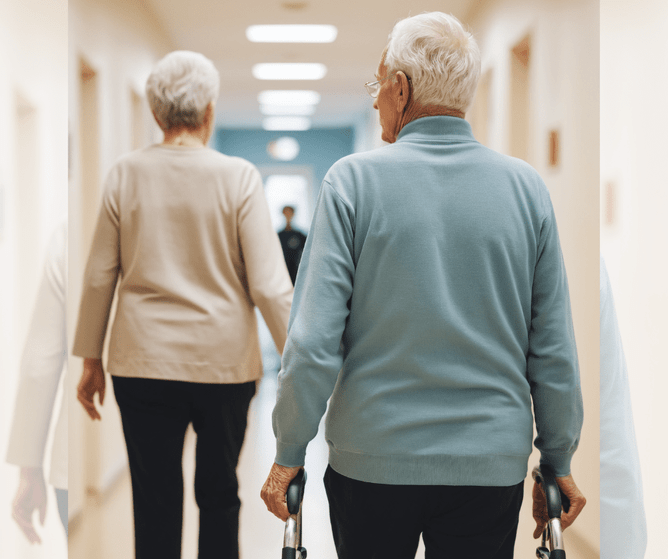What is Parkinson’s Disease? Understanding Symptoms and Progression
Parkinson’s Disease is a progressive condition that affects the nervous system, impacting movement and coordination. It occurs when nerve cells in the brain begin to break down, particularly those that produce dopamine, a chemical that helps regulate smooth, coordinated movement. As dopamine levels decrease, people with Parkinson’s may start to experience symptoms like tremors, stiffness, and difficulty with balance. While Parkinson’s is more common in older adults, it can also affect younger people, which makes awareness of the disease so important.
Understanding the symptoms of Parkinson’s is crucial. When we recognise the signs early, we can help ensure that people with Parkinson’s get the right care and support sooner, making it easier to manage the condition.
Symptoms of Parkinson’s Disease
The symptoms of Parkinson’s Disease can look different from person to person, and they can range from mild to severe. In the early stages, changes can be subtle. Some people may notice a slight tremor in one hand, or their face might appear less expressive, a symptom known as "masked face." Over time, these early signs can develop into more noticeable challenges with movement.
As Parkinson’s progresses, common symptoms can include:
Difficulty walking, which may cause a shuffling gait
Muscle stiffness, which can make movement feel slow or stiff
Trouble balancing, which can increase the risk of falling
Speech difficulties, like speaking softly or slurring words
Trouble sleeping or feeling fatigued during the day
Emotional changes, including depression or anxiety
Cognitive issues, like slower thinking or memory problems
Early recognition of these symptoms is important. The sooner a person seeks medical advice, the sooner they can start managing the condition with the right treatments.
How Parkinson’s Disease Progresses
One of the tricky parts of Parkinson’s Disease is how it progresses. Some people experience a gradual worsening of symptoms over many years, while others may notice their symptoms getting worse more quickly. It’s difficult to predict the exact course of the disease for each individual, which is why treatment plans are tailored to each person’s needs.
While there’s no cure for Parkinson’s, there are ways to manage symptoms effectively. Medication is one of the main tools used, especially drugs that increase dopamine or mimic its effects. Along with medication, physical therapy and exercise can help maintain mobility and flexibility, as well as reduce muscle stiffness. Many people with Parkinson’s continue to live fulfilling lives by staying active, working closely with their healthcare team, and being proactive about their health.
The Role of Support
Living with Parkinson’s requires adjustments, and having a strong support system makes a big difference. Family and friends are often the biggest champions for someone with Parkinson’s, and their understanding of the disease can help improve quality of life. It’s important to communicate openly, as Parkinson’s can sometimes make it harder to express thoughts and feelings. By keeping the lines of communication open, caregivers and loved ones can help make daily life more manageable.
For caregivers, learning as much as possible about Parkinson’s is essential. The more they understand the condition, the better equipped they are to provide practical support. Whether it’s assisting with mobility or just providing emotional reassurance, having a good understanding of the disease helps caregivers feel more confident in their roles.
Support groups can also be a valuable resource, offering emotional support and practical advice from others who understand what it’s like to live with or care for someone with Parkinson’s. These networks help individuals and families feel less isolated and provide opportunities to share experiences and coping strategies.
Research and Future Hope
Research into Parkinson’s Disease is ongoing, and scientists are working hard to discover new treatments and ways to manage the condition. Researchers are studying everything from genetic factors to new drug therapies that could slow the disease’s progression. Technology is also helping, with devices that assist with movement and apps that track symptoms, making it easier to manage daily life.
There’s hope that breakthroughs are on the horizon, and clinical trials are an opportunity for individuals to access new treatments while contributing to the broader understanding of Parkinson’s. While there’s still much to learn, continued research and medical advancements offer optimism for a brighter future for people with Parkinson’s.
Conclusion
Parkinson’s Disease may be challenging, but with early detection, proper treatment, and strong support, people with the condition can continue to lead fulfilling lives. Raising awareness and understanding the symptoms and progression of Parkinson’s is the first step toward better care and better outcomes. At Holistic Strength, we’re here to support individuals living with Parkinson’s through services like Exercise Physiology, Occupational Therapy, Speech Therapy, or a Dietitian, which can help improve quality of life. Together, we can help those with Parkinson’s embrace life and continue to thrive despite the challenges.
